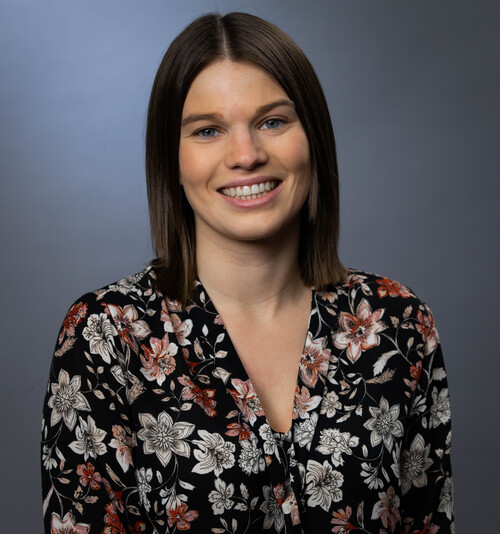Heidi Pickard

You should know three things about per- and polyfluoroalkyl substances (PFAS). The first is that these chemical compounds are persistent. The strength of their bonds prevents them from breaking down in the natural environment. The second is that they’re everywhere; PFAS are used in cookware, carpeting, cosmetics, and many other consumer products. The last and probably most important thing to know is that PFAS are probably bad for you. The chemicals are associated with widespread negative impacts on health.
The good news is that private industry is shifting away from the production of certain types of PFAS—largely in response to regulation like the PFAS Strategic Roadmap announced by the Environmental Protection Agency in 2021. The bad news is that the shift is usually to different kinds of PFAS. Alarmingly little is known about these substances, many of which are referred to as precursor PFAS. With her 2024 Harvard Horizons project, “Investigating Environmental Contamination and Human Exposure to Overlooked and Difficult to Measure Chemical Compounds,” PhD student Heidi Pickard seeks to uncover the prevalence of these precursors in our water and food and assess the impacts on the environment and health.
Pickard used a combination of methods to assess the full extent of PFAS contamination and analyzed the muscle tissue of eight species of recreational freshwater fish caught in southern New Hampshire. In all samples, she found traces of precursor PFAS associated with the electrochemical fluorination process historically used in manufacturing. Pickard also studied surface waters downstream of a military base in Cape Cod, Massachusetts where AFFF was used to train firefighters. “Aqueous film-forming foam is one of the largest sources of PFAS,” she explains. “It’s used at almost every military base and airport across the United States, so there are hundreds if not thousands of these sites. But we have limited understanding of the extent of contamination present in nearby ecosystems and which PFAS used in the foam are accumulating in fish around these sites—particularly those that are consumed by local fishers or indigenous communities in the area.”
To address the data gap, Pickard analyzed a variety of Cape Cod fish species consumed by the indigenous Mashpee Wampanoag and others. She found high concentrations of PFOS in the fish, the chemical most frequently regulated because of its well-known toxicity, but there were also abundant precursor PFAS present in the fish.
“There is one class of precursors called perfluoroalkyl sulfonamides, which have a very similar molecular structure to PFOS, only with a sulfonamide head group on the end,” Pickard explains. “These precursors can break down to PFOS or other similar terminal compounds depending on the carbon chain length of the molecule. But what we're finding is that those chemicals aren't breaking down. They persist for a long time and accumulate at high concentrations in the fish.”
This last finding—about the resilience of precursors and the levels at which they accumulate in biota—is one Pickard says should concern regulators and the public. “My work is trying to sound the alarm,” she asserts. “These precursors we've assumed aren’t a problem probably are. So, we need to include them in regular biomonitoring and conduct toxicity assessments to identify whether or not exposure to these types of chemicals is important for fish consumers.”

